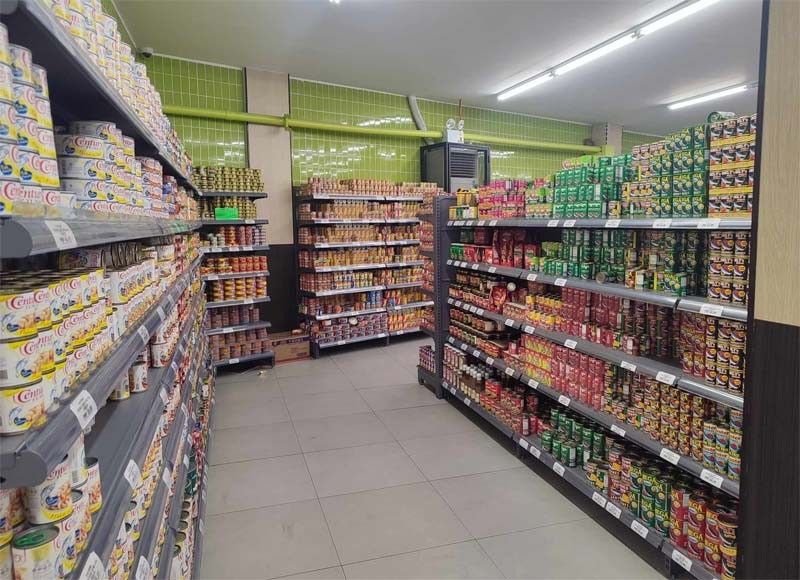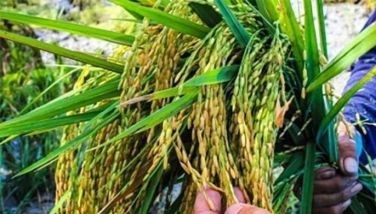Philippines most at risk from rising food, power prices

Among emerging Asian economies
MANILA, Philippines — The Philippines has emerged as the most vulnerable from rising food and energy prices among countries in emerging Asia, according to the Nomura Food Vulnerability Index (NFVI).
The index, covering 110 countries, showed that 50 of the most affected by food price surges are emerging market economies.
“A scatter plot of our NFVI scores against net oil imports of each country highlights that the most vulnerable to surging food and oil prices are small frontier economies; the larger ones include the Philippines and Pakistan,” Nomura said in its latest economic insights.
Nomura assumed a 20-percent rise in food and energy prices by the end of the year.
“In Europe, Italy and Spain appear the most vulnerable, while in emerging market Asia we judge the Philippines and India to be the most exposed,” Nomura said.
The Philippines ranked 17th in the NFVI, which estimates a country’s exposure to large food price swings.
“Indeed, in the NFVI of 110 countries, the Philippines ranks 17th, which is the highest among larger emerging market economies,” Nomura said.
Nomura pointed out that emerging Asia is exposed to rising food and oil prices since most economies are net oil importers, and food and energy accounts for nearly half of the consumption expenditure.
“Higher commodity prices are tantamount to a negative terms-of-trade shock for the region, although the pass through would not be immediate, due to government intervention through price controls or subsidies, which either results in a higher fiscal cost of inflation or a delayed price pass through,” it said.
Nomura said there is a six-month lag between global food price inflation and consumer price index (CPI) food inflation in Asia. It said higher oil prices would worsen current account balances, while higher food prices would have a more negative impact on inflation.
Within emerging market Asia, Nomura said the Philippines and India are the most exposed, since food and energy accounts for 48.2 percent of total CPI in India and 43.9 percent in the Philippines.
Based on the working assumption that food and energy prices rise by 20 percent by yearend, the current account balances of both economies could worsen by 0.6 percent of gross domestic product (GDP) on an annualized basis.
“We believe the Philippines is more exposed than India, because of its weaker starting point (high inflation, weaker real GDP growth and a wider current account deficit),” Nomura said.
According to Nomura, the Philippines is more vulnerable to higher food prices due to the high share of food in its CPI basket at 34.8 percent, especially rice at 8.9 percent of CPI, and since net food imports account for over two percent of GDP, the second highest in the region after Hong Kong.
It added that the Philippines is also exposed to higher oil prices, since the absence of subsidies means there is an immediate pass-through to consumers, at a time when the government’s infrastructure push is already boosting imports of capital goods.
On policy, Nomura sees fiscal and supply-side interventions as the first lines of defense, while monetary policy is likely to respond to any second-round effects on inflation expectations and core inflation.
Given the Philippines’ limited fiscal space and high inflation risks, Nomura said the Bangko Sentral ng Pilipinas (BSP) may need to resume its rate hiking cycle versus its baseline view of an extended pause.
Furthermore, Nomura said the peso is also one of the most vulnerable currencies due to rising food and energy prices as it is one of the largest net energy importers as well as the second largest net food importer in the region.
“Indeed, our analysis of historical oil price spikes shows that the peso performs the worst in the region against the US dollar, on average over the duration of these oil events.
If food and energy prices were to rise by 20 percent by year-end, Nomura estimates that the Philippines’ current account balance would worsen. It projects a current account deficit of $17.8 billion for the Philippines or 4.1 percent of GDP this year.
“This would exert further depreciation pressure on the peso, as Philippines’ trade deficit is already under significant strain from the government’s priority to build infrastructure projects, the official food importation drive to address domestic supply shortages and weakening external demand for Philippines’ exports.”
- Latest
- Trending





























